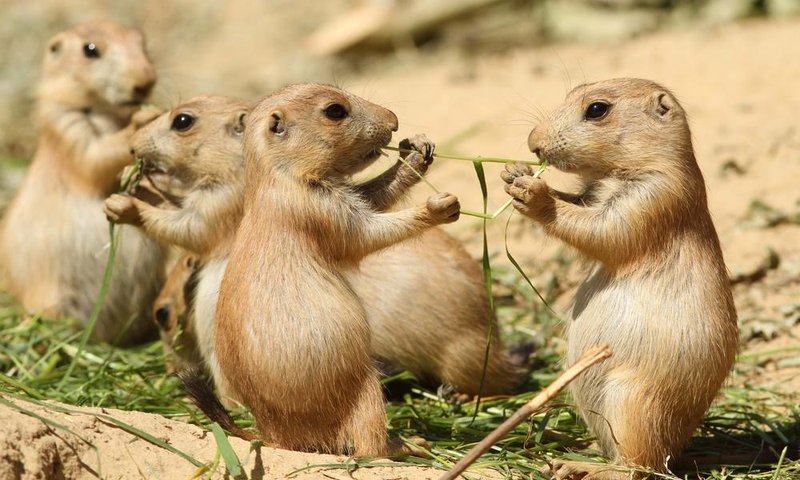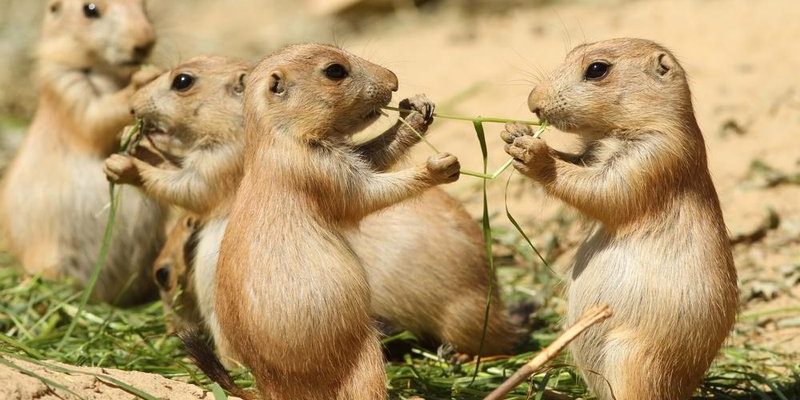
The truth is, the status of prairie dogs varies across different regions. While some populations are thriving, others face significant threats. Let’s dive into the world of prairie dogs, explore their conservation status, and discuss what we can do to protect these vibrant little sentinels of the plains.
Understanding Prairie Dog Populations
Prairie dogs are found primarily in the grasslands of North America, particularly in the Great Plains. They are a keystone species, meaning they play a critical role in their ecosystem. Their burrowing habits help aerate the soil, and their tunnels create homes for many other animals, from owls to snakes.
However, the overall population of prairie dogs is tricky to pin down. Some estimates suggest there were hundreds of millions of prairie dogs at one point. Today, some populations, especially in the western United States, have suffered drastic declines. This is due to factors like habitat loss, disease, and human interference.
You might be wondering why these little guys matter. Their colonies support various wildlife and contribute to the health of their habitats. So, if prairie dog numbers drop, it can have a cascading effect on the entire ecosystem.
What Threatens Prairie Dogs?
Several factors threaten the prairie dog population. Here’s a breakdown:
- Habitat Loss: Urban development and agriculture are two of the biggest culprits here. As land is converted for farming or building, prairie dog habitats are destroyed.
- Human Perceptions: Many people mistakenly label prairie dogs as pests because they dig up farmland and can damage crops. This leads to extermination efforts that can negatively impact their populations.
- Diseases: Prairie dogs can be susceptible to diseases, such as sylvatic plague. When one animal in a colony gets sick, it can quickly spread, decimating the entire town.
Understanding these threats can help us appreciate why conservation efforts are so important. Protecting prairie dogs means protecting an entire ecosystem.
Conservation Status of Prairie Dogs
Currently, the black-tailed prairie dog is classified by the U.S. Fish and Wildlife Service as a species of concern, while other species like the white-tailed prairie dog are listed as endangered. This means there’s a recognized need for conservation, but the levels of protection vary:
– Black-tailed Prairie Dog: While not endangered, they are considered a species of concern due to declining populations in certain areas.
– White-tailed Prairie Dog: This species faces more serious threats and is at risk of extinction.
Each state manages its prairie dog populations differently. In some places, hunting is allowed, while in others, strict protections are in place. This patchwork of regulations can make it challenging to ensure their survival across their entire range.
Efforts to Protect Prairie Dogs
There are various conservation efforts underway to help prairie dogs. Some of these include:
– Habitat Restoration: Conservation groups are working to restore and preserve the grasslands that prairie dogs call home. This includes creating protected areas where they can thrive without human interference.
– Public Education: Educating the public about the ecological importance of prairie dogs is critical. When people understand their role in the ecosystem, they’re more likely to support conservation efforts.
– Disease Management: Programs have been established to monitor and manage disease outbreaks in prairie dog colonies. By keeping an eye on their health, conservationists can help prevent more significant losses.
It’s not just about saving prairie dogs; it’s about maintaining the balance of the ecosystems they live in.
Why Should We Care About Prairie Dogs?
Here’s the thing: prairie dogs are more than just cute, fur-covered critters. They are vital for the health of the grasslands they inhabit. Their burrowing activities help aerate the soil and promote the growth of plants that other species rely on. Additionally, prairie dog towns provide homes for over 100 different species, including raptors, ferrets, and rabbits.
When you start to look at the bigger picture, it becomes clear that losing prairie dogs can mean losing a whole lot of biodiversity. It’s like yanking one piece from a Jenga tower; it can lead to a complete collapse.
Plus, prairie dogs are a great indicator of the overall health of their environment. If their numbers are dwindling, it’s a sign that something is off, whether it’s pollution, climate change, or resource management issues.
How You Can Help
You might be thinking, “What can I do about prairie dogs?” It might seem like a big problem, but there are simple ways you can help:
– Support Conservation Organizations: Many non-profits focus on protecting prairie dogs and their habitats. Consider donating or volunteering your time to support their initiatives.
– Educate Others: Share what you’ve learned about prairie dogs with your friends and family. The more people understand their ecological importance, the more likely they are to care.
– Advocate for Policies: Get involved in local conservation efforts or advocate for policies that protect wildlife habitats. Your voice matters!
Small actions can lead to significant changes. Every effort counts in the fight for prairie dog conservation.
The Future of Prairie Dogs
In the end, the future of prairie dogs hangs in the balance. While some populations are struggling, there are dedicated efforts to ensure they can thrive once again. With the help of conservation groups, local communities, and individuals like you, there’s hope for these charming little creatures.
They’re not just a part of the grasslands; they’re a part of our natural heritage. We owe it to them—and to ourselves—to protect them. So next time you think about prairie dogs, remember: they are more than just cute animals popping out of holes; they are vital players in the ecological web of life.
Let’s be the best stewards we can be for prairie dogs and the ecosystems they support.

